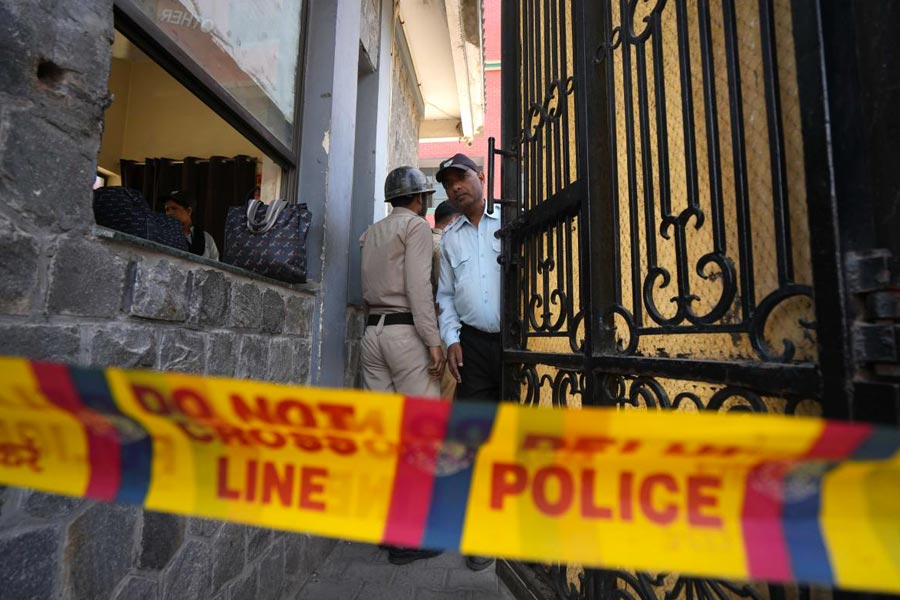 |
Swedish writer Stieg Larsson’s posthumously published Millennium trilogy sold over 27 million copies in 40 countries within five years of the first title, The Girl with the Dragon Tattoo, coming out in 2005. In July 2010, Larsson beat Twilight writer Stephenie Meyer and thriller writer James Patterson to become the first author to sell more than a million e-books on Amazon. Larsson died reportedly of a heart attack on November 9, 2004, shortly after submitting the manuscript of his trilogy to a publisher. He never saw the literary phenomenon his books became, though friend Jan-Erik Pettersson writes in his biography Stieg how Larsson had once quipped: “I’m going to write a few thrillers instead (of saving for pension) and become a multimillionaire.”
As we near what would have been the journalist-writer’s 57th birthday (August 15), t2 tries to understand what makes Stieg tick…
The novels are out-and-out thrillers, but it’s Larsson’s main as well as little characters and how they behave in the midst of all the action that make these books page-turners in the true sense. Complex relationships are seamlessly woven into the narrative of a racy murder-thriller peppered with intrigue, full-on violence and edge-of-the-seat action. And by the time you realise that Larsson is introducing nuances about his characters with every turn of the page and withholding crucial information sometimes till as far as the third book, it’s nothing short of sweet, slow torture.
The books centre round the 20-something Lisbeth Salander, a pierced and tattooed “social misfit” with an epic suspicion of any kind of authority. A master hacker and fierce loner, Lisbeth operates by her own moral code, never mind what the law says.
Partnering her is investigative journalist Mikael Blomkvist, who co-owns an independent magazine, Millennium, from which the series gets its name.
While much has been said and written about Salander and Blomkvist, one of the unsung heroes of the trilogy is Erika Berger, the super-confident editor of Millennium, Blomkvist’s best friend and occasional lover. If Salander charms us with her intelligence and fight-unto-death spirit, the happily married Berger wows us with her sparkling honesty.
The Girl With the Dragon Tattoo
 |
Book 1 begins with Blomkvist losing a libel suit filed by an industrialist and retreating to the Swedish countryside to lick his wounds. He is hired by ageing patriarch Henrik Vanger to solve the “murder” of his teenage niece, who disappeared some 40 years ago. Salander, who was initially hired by Vagner’s lawyer to dig up dirt on Blomkvist, soon joins him in his mission.
[As they come close to solving Harriet Vagner’s disappearance, we sheepishly admit to have delayed the departure of a Delhi-Calcutta flight, so engrossed were we in finding out the truth!]
The Girl Who Played With Fire
 |
| Now that we’re done with all three books and the possibility of a fourth is mired in legal wrangles, we can’t wait for David Fincher’s film based on The Girl with the Dragon Tattoo. To be released in the US in December 2011, the film has Bond man Daniel Craig as Mikael Blomkvist and The Social Network actress Rooney Mara as Lisbeth Salander. Fingers crossed for a speedy India release. |
In Book 2, Blomkvist is a celebrity journalist, having exposed the industrialist who had sent him to prison earlier on libel charges, while Salander is super rich; we’ll not tell you how! Even as Salander enjoys her new-found wealth, she finds herself named as a deranged murderer by the cops, accused of killing three people. As can be expected, she goes into hiding and Blomkvist takes it upon himself to find out the truth, all the while desperately trying to convince Salander that he’s her friend. While the ending may require a Bollywood-esque leap of faith, the storyline is gripping, the violence matter of fact and the detailing thorough.
[What blows our mind is Larsson’s guts as a writer. Despite their crackling chemistry, the author allows his two protagonists to meet only in the last few pages of the book.]
The Girl Who Kicked the Hornets’ Nest
We read Book 3 as slowly as possible, knowing this would be the last Stieg Larsson novel we’ll ever lay our hands on.
It starts exactly where the second one left off — with a bullet lodged in Salander’s brain. But you don’t put a bullet through Lisbeth Salander’s head and then rest easy. It’s payback time for the man who all but killed her and all those government agencies that messed up her life. And yes, she still has to prove her innocence in the triple murder case against her. With help from Blomkvist and his Millennium colleagues, Salander fights the system and her traumatic past. And how!
P.S. According to information available, Larsson had finished 320 pages of a 600-page Book 4, including the beginning and ending. Only some middle portions were yet to be written when he died. And there are notes for Book 5, along with indications that he had planned to write 10 books in the Millennium series.
The publication of Book 4 is caught in a legal battle between Larsson’s partner of 32 years Eva Gabrielsson and his father and brother, who are his heirs in the absence of a will.
the man who kicked up a literary storm
• Stieg Larsson was born Stig Larsson but probably changed it to Stieg around 1973 to differentiate himself from another writer-activist of the same name in his town, Umea, in Sweden.
• Stieg was 14 when he became involved with the Swedish support movement for the Vietnam NLF (National Front for the Liberation of South Vietnam). It is here that he met his future partner Eva Gabrielsson, with whom he had a 32-year relationship till his death at age 50.
• He was quite the movie buff and in the 1960s and ’70s, collected film music. His favourite film was Stanley Kubrick’s 2001: A Space Odyssey, based on Arthur C. Clarke’s eponymous novel.
• Stieg’s first typewriter was a gift from his parents at age 12.
• He was a science fiction fan and Isaac Asimov was his favourite. He and his friend Rune Forsgren published an Asimov-inspired stencilled fanzine called Sfären (The Sphere).
• Stieg was also interested in crime fiction and interviewed authors and presented surveys of recent books. Authors Elizabeth George and Sara Paretsky were his favourites.
• When he went to establish contact with guerrillas in Eritrea, he was taken to one of their bases, where he trained female guerrillas in the use of mortars.
• He joined Tidningarnas Telegrambyra, a press agency, in 1979. He worked there for 20 years, initially creating news graphics.
• In 1991, Stieg published his first book along with Anna-Lena Lodenius called Extremhogern (The Far Right).
• Stieg was instrumental in setting up the magazine Expo, which investigated right-wing extremism, on which he was an expert. The first issue was published in October 1995. He became the editor-in-chief of Expo in 2003.
• Stieg received numerous threat letters and phone messages and his name routinely popped up on neo-Nazi websites across Europe. He coped by adopting elaborate safety measures like arriving late for scheduled meetings or sitting with his back to the wall at cafes. Safety was the primary reason why Eva and Stieg never married, so that they could not be traced, since in Sweden one is required to declare one’s address to get married. He also wrote a brochure called Surviving the Deadline: A Handbook for Journalists Under Threat.
• Stieg wrote with his Apple Mac on his lap, his feet propped on the table.
Compiled from Stieg — From Activist to Author, by Jan-Erik Pettersson, Quercus, 2011










